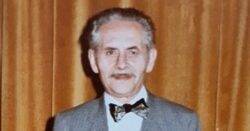Roman Szalajko was fatally stabbed in 1984 and the case into his death was closed in the same year (Picture: PA)
A man was able to evade murder charges for 40 years after stealing the identity of a dead Welshman and moving to Portugal, a court has heard.
Roman Szalajko, 62, was fatally stabbed after he answered the door to his flat in south London, in February 1984.
The identity of the killer was a mystery until a cold case review in 2013 when a fingerprint was linked to a man called Paul Bryan, who was 22 at the time, the Old Bailey heard.
Jurors were told how the suspect, who lived in Hammersmith, west London, at the time, appeared to disappear without a trace.
But he was eventually tracked down by an officer who discovered Bryan had stolen the identity of a dead man with the same name.
Bryan, now 62, was arrested at Stansted Airport last year and admitted having a false identity document but denied Mr Szalajko’s murder.
Prosecutor Louis Mably KC, said Mr Szalajko was a longstanding UK resident and a divorced dad-of-two.
He lived alone in Kennington, south London, and had a ‘number of lady friends’, according to the prosecution.
The trial continues at the Old Bailey (Picture: Getty Images)
Jurors were told he was ‘secretive’ and a gambler, and sometimes left his flat with thousands of pounds.
Mr Szalajko was on the phone to a builder friend, Michael Peddubriwny, on the morning of February 7 1984, when he broke off, saying in Polish: ‘Excuse me a moment, there’s someone at the door.’
Mr Peddubriwny then heard Mr Szalajko say loudly in English: ‘What do you want? Help! Help!’
He then shouted down the phone: ‘Roman, what’s going on?’ but the line went dead, having been cut, jurors heard.
Mr Szalajko was found slumped in a chair in the living room with a fatal stab wound to his stomach, after Mr Peddubriwny called 999 in a ‘panic’ and two police officers went to the flat.
Mr Mably said his body was still warm to the touch, there was evidence of a search, and the constables noticed lengths of hair on the floor.
More: Trending
Police launched an investigation and evidence was collected from the scene, including fingerprints, clothes, the telephone, the clumps of hair pulled from the victim’s head, and £1,000 in Spanish pesetas.
The case was closed in 1984 after lines of the original inquiry were exhausted.
But in 2013, previously unidentified fingerprints on a ‘Polish mead’ bottle from a wardrobe in the victim’s bedroom matched the defendant’s on the police database.
Efforts to find Bryan proved difficult because there appeared to be no records of his existence after 1989.
Mr Mably said: ‘It was as if he had completely disappeared. A complete blank.
‘One police officer was able to pull the scraps of evidence together, and began to unwind the steps the defendant had taken from the late 1980s to disappear from public view.’
Bryan applied for an emergency passport three days after Mr Szalajko’s murder after his old one expired in 1977.
The passport ran out in May 1984 and it was the last one issued in his name.
An arrest in 1997 when he gave police his name and was with a woman called Sylvia Bryan was the only post-1989 record of Bryan.
There was no record of a female relative called Sylvia so police searched for all Paul Bryans and found a Welsh Paul Bryan born in 1955.
The prosecution told jurors police examined the 1998 marriage record of the Welsh Paul Bryan to Sylvia, a widow and tour operator.
He said: ‘But there was a problem. By 1989 the Welsh Paul Bryan was already dead – he had died in 1987.
‘The alarm bells went off and the suspicion was this defendant had assumed the identity of the Welsh Paul Bryan and further investigation found that to be the case.’
A passport was also issued under the identity of the Welsh Paul Bryan in 1989, and this was later renewed.
Forensic tests which were unavailable in 1984 resulted in a DNA breakthrough.
In Bryan’s absence, cells from his late mother’s hairbrush were compared with traces on the victim’s vest and clump of hair and found to be a close DNA match, Mr Mably said.
The hunt for him ended on November 19 last year when he was arrested at Stansted Airport after stepping off a plane from Lisbon, Portugal.
Bryan attempted to ‘brazen it out’ and pretended he was a different Paul Bryan.
However swabs were compared with the DNA at the murder scene and found to be a ‘perfect match’.
He admitted his true identity but told officers he had lost his memory after a serious car crash in Lisbon in a police interview.
He claimed to have assumed the false identity because he married an older woman.
Mr Mably said: ‘When questioned about the presence of his fingerprint at the scene, he said it was “bullshit”.
‘When told about the presence of his DNA on the vest and hair, his response was “F****** hell. This is like a bad nightmare”.’
The trial continues.
Get in touch with our news team by emailing us at [email protected].
For more stories like this, check our news page.
The suspect was only captured last year.





